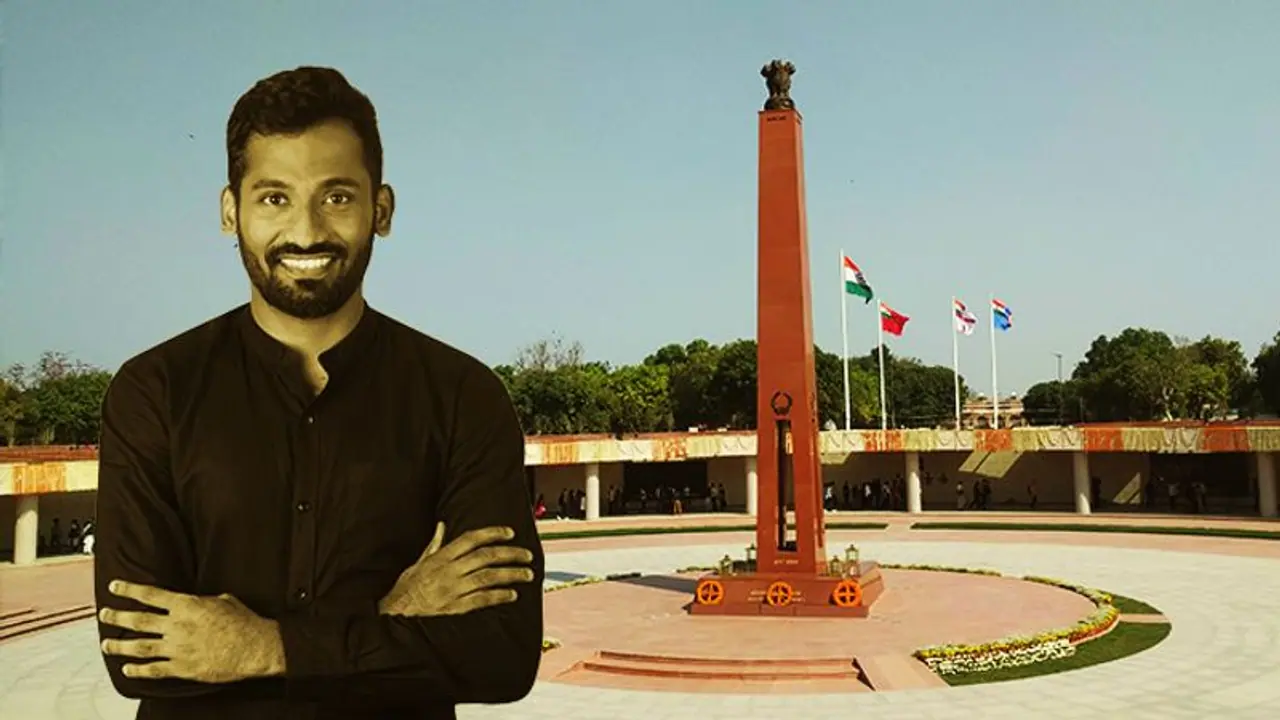Yogesh recalls that the inception of the design came from the idea that martyrs are immortal. Memorials are usually a place where we mourn death, but NWM should be a place where we celebrate the life of the soldiers and pay respect to the sacrifices made by them.
Chennai: The much-awaited National War Memorial, which is dedicated to the Indian soldiers who sacrificed their lives fighting for the county since its Independence in 1947, is designed by Yogesh Chandrahasan — a Chennai based architect.
The young architect bagged the prestigious project after beating 450 global participants, who had sent their entries for a design competition held by Ministry of Defence in 2016. Chandrahasan is a partner in the Chennai-based WeBe Design Lab. Interestingly, the company witnessed two of his partners’ designs going to the final round of the competition.
Speaking to MyNation, Chandrahasan said, “initially we didn’t know that we are going to be a part of a lifetime project. The credit for this goes to MoD, which organised an international competition instead of inviting only top companies. Startups and new companies like ours managed to get this prestigious opportunity.”
Also read: 6 famous battles by Indian defence forces showcased at National War Memorial
Yogesh recalls that the inception of the design came from the idea that martyrs are immortal. Memorials are usually a place where we mourn death, but NWM should be a place where we celebrate the life of the soldiers and pay respect to the sacrifices made by them.
“At the time when I was sketching the design I was only thinking about Captain Vikram Batra’s quote- I will either come back after raising the Indian Flag or wrapped in it. Indian soldiers don’t die they are reborn and inspire the generations to come,” he said.
Yogesh’s design was commissioned to build in the year 2017 and the National War Memorial was opened to the public by Prime Minister Narendra Modi on February 25. The memorial is spread over 42 acres of lawn in the C - hexagon, near the India Gate.
Design of NWM
The design of the NWM was conceived carefully to retain the character of the open public space and the aesthetical sanctity of the Lutyens’ planning.
The design concept is interpreted as four concentric circles spread over 40 acres. The four circles depicted the Amar Chakra (circle of immortality), the Veer Chakra (circle of bravery), the Tyag Chakra (circle of sacrifice) and the Rakshak Chakra (circle of protection).
The outermost circle, i.e. the Raksha chakra personifies the territorial control of the armed forces at the borders. Trees are the major elements, arranged in a specific order of circular arrangement, inspired by the fleet formation of the soldiers. This signifies their firm presence and hold on the ground.
The next circle, i.e. the Tyag Chakra metaphorically represents the formation of the soldiers in the war. The concept is derived from chakraviyugam, where the soldiers stand in an endless row forming concentric circles. In Tyag Chakra, each granite stone block represents a martyr, on which his name and ranks are engraved. The wall holds the name of 25,942 martyrs, who sacrificed their lives protecting the nation.
The Circle of bravery, i.e the Veer Chakra has been conceived as subterranean colonnaded semi-open corridor holding the stories of the bravehearts. Veerta Chakra Gallery holds 6 bronze murals which depict the six important battles fought by the Indian soldiers since the country’s independence.
The focal point of the memorial is the innermost circle which is the “Circle of Rebirth” (Punarjanm). It symbolises the immortality of the jawans through the eternal fire.
